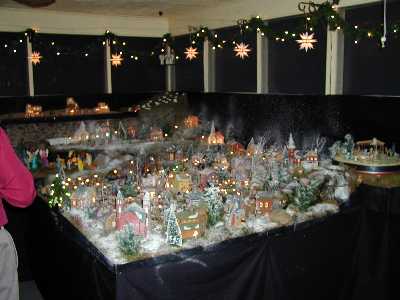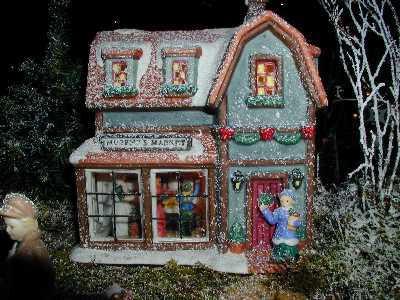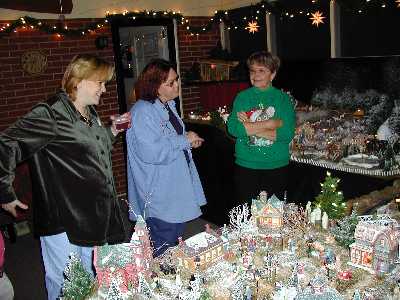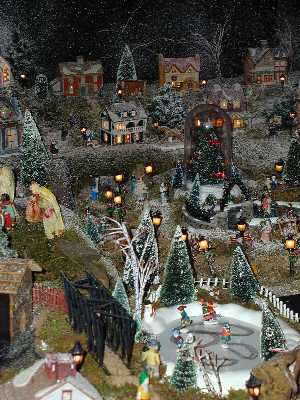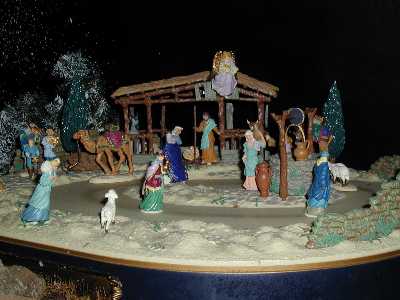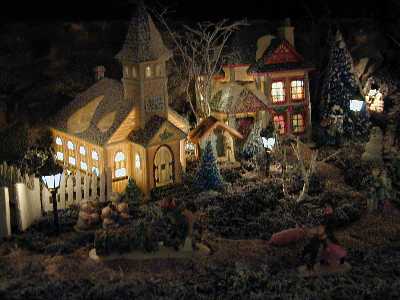A putz is a
German word meaning decoration. American Moravians use it to mean a special
kind of decoration. In all probability the custom came from the church
of the middle ages when priests placed figures of the holy family in churches
so that their illiterate people might get a better understanding of the
Christmas story. The Moravian settlers in America brought the custom with
them and carried it out at an early date. Through diaries, we know that
the people of Bethabara, NC displayed the putz there in 1760. The putz
is a reminder of the manger scene in the stable of Bethlehem. Jesus birth
is always the focal point of the putz. Around the nativity there may be
villages, people, farm houses, lakes and hillsides. All represent that
Jesus came for the whole world. Whether arranged with moss or sod, underneath
the Christmas tree or on a table or mantel, always its purpose is to tell
the story of the wonderous birth of Jesus our Savior in the stable of Bethlehem
in Judea. (Luke 2:1-20)
